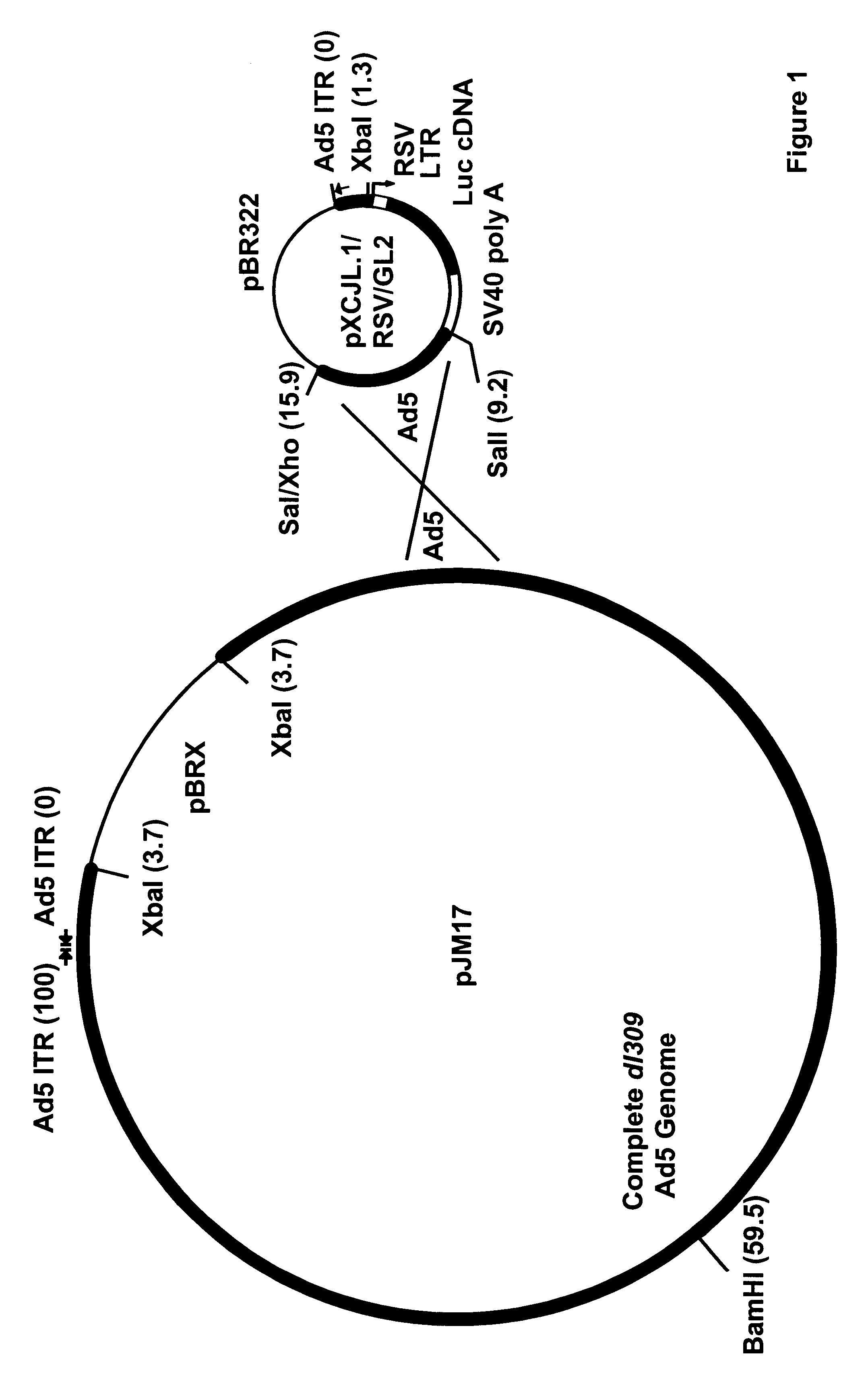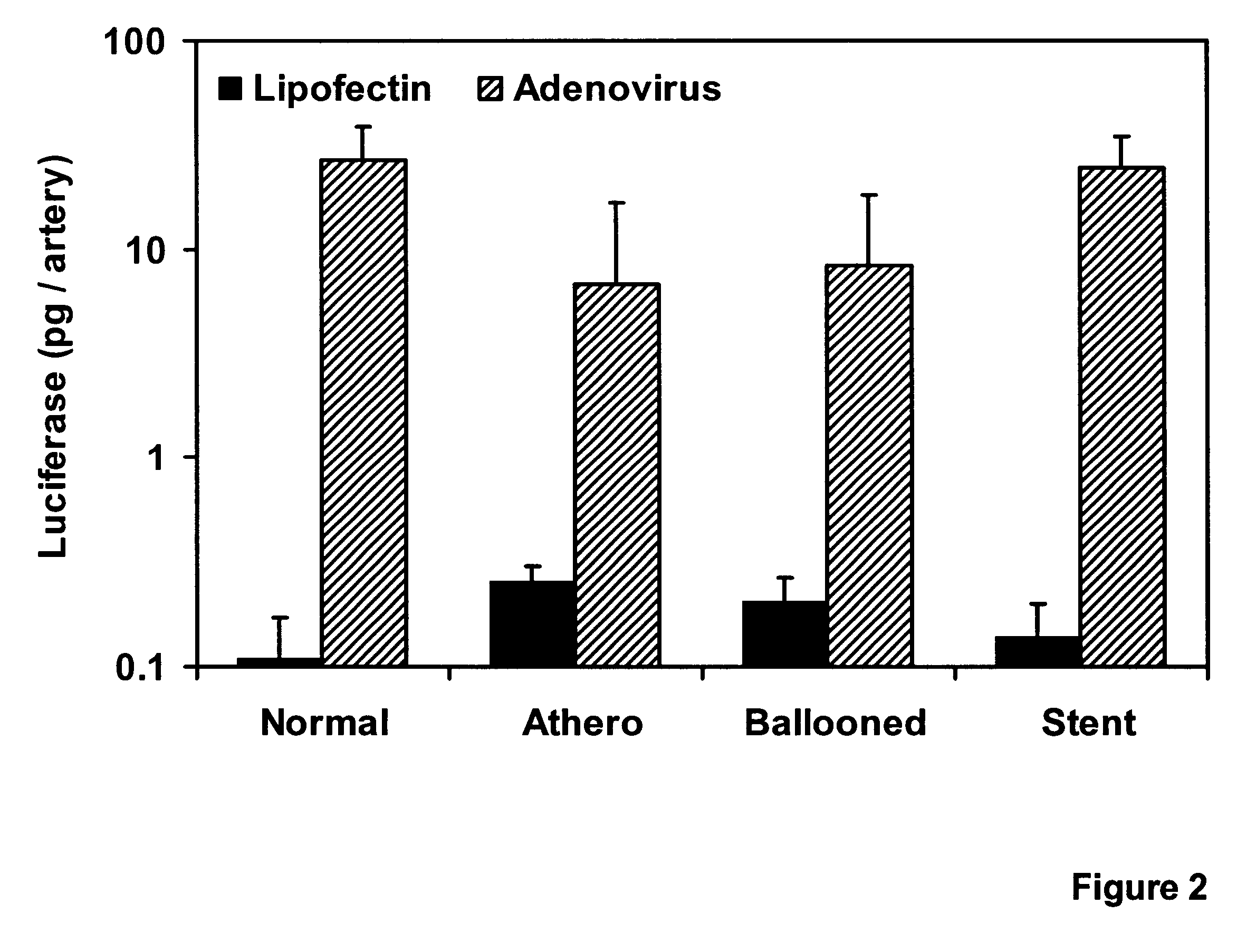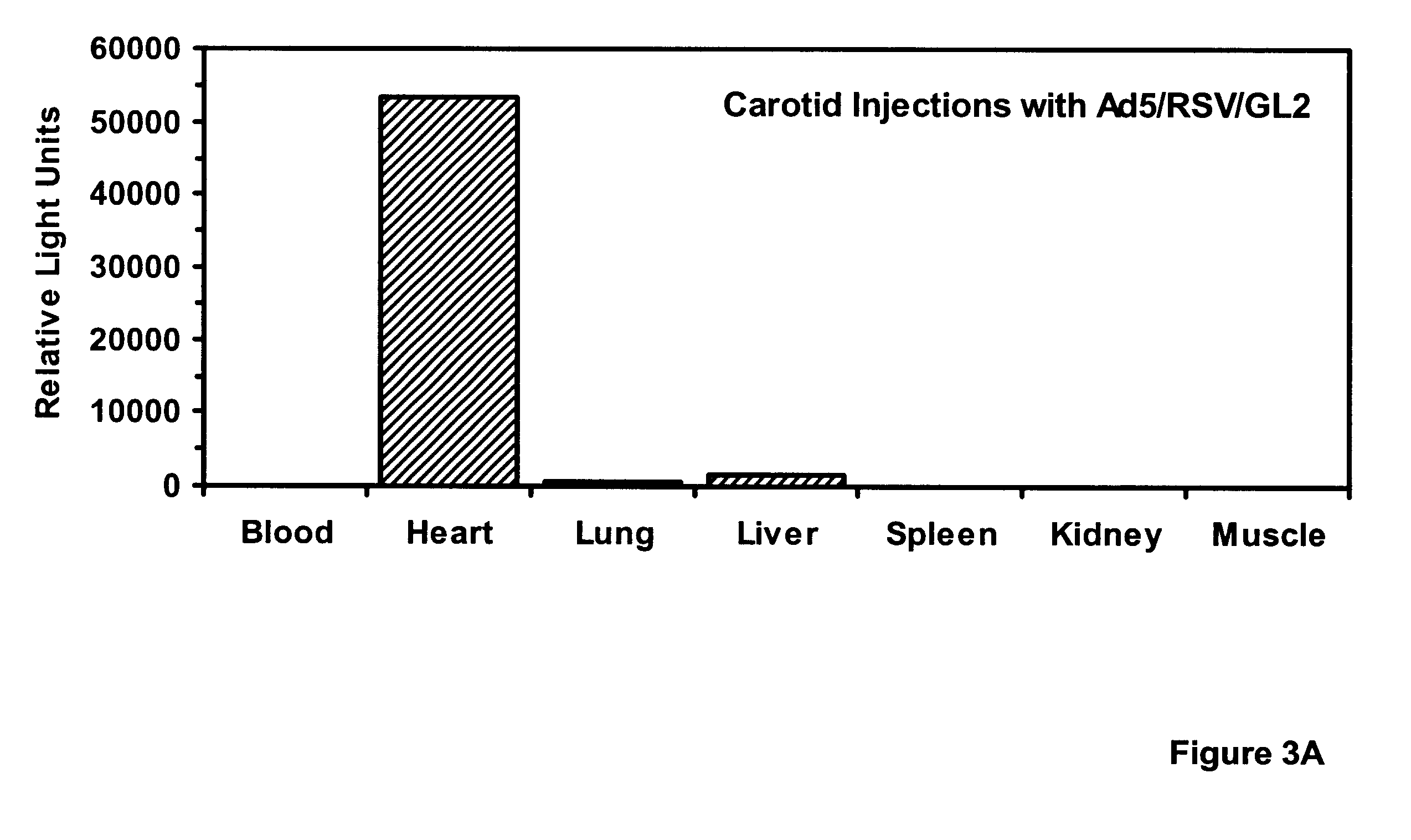Adenoviral vector for inhibiting restenosis
a technology of adenoviral vector and restenosis, which is applied in the direction of dsdna viruses, biocide, genetic material ingredients, etc., can solve the problems of ineffective transfection methods, unavoidable injury to arterial walls, and inability to effectively inhibit restenosis, so as to prevent or lessen restenosis, inactivate specific growth factors, and high concentration of antiproliferative proteins
- Summary
- Abstract
- Description
- Claims
- Application Information
AI Technical Summary
Benefits of technology
Problems solved by technology
Method used
Image
Examples
example 1
Influences of Delivery Volume and Pressure
In order to evaluate the basic parameters which influence the efficiency of direct gene transfer, a perforated balloon delivery system (Wolinsky Infusion Catheter [WIC], USCI, Billerica, Ma.) was employed. 50 .mu.g of reporter vector DNA (pRSVL) was complexed with 150 .mu.g of Lipofectin.TM. (BRL, Gaithersburg, Md.) and diluted to either 4 or 8 ml with Opti-MEM I.RTM. (also from BRL). The volumes were infused into the RCA, LAD, and LCX coronary arteries of 8 intubated Hanford miniature swine using modestly oversized WIC's (balloon / artery ratio of 1.1-1.3) and inflation pressures of either 4 or 8 atm. The animals were revived following catheterization and maintained for 3 days before sacrifice for arterial harvest and luciferase assay using a Monolight 2010 luminometer (Analytical Luminescence Laboratory [ALL], San diego, Calif.). Background was subtracted and the total mass of luciferase protein recovered from eac...
example 2
Construction of an Adenoviral Reporter Vector Carrying the Luciferase Gene
The lacZ reporter gene has been employed in direct gene transfer experiments targeting peripheral (Nabel, E. G. et al., Science 249:1285 (1990); Flugelman, M. Y. et al., Circulation 85:1110-1117 (1992); Lemarchand, P. et al., Circ. Res. 72:1132-1138 (1993)) and coronary arteries (Lim, C. S. et al., Circulation 83:2007-2011 (1991)), but endogenous .beta.-galactosidase activity has been observed in arterial sections by our laboratory and others (Lim, C. S. et al., Circulation 83:2007-2011 (1991); Flugelman, M. Y. et al., Circulation 85:1110 (1992)). For this reason, the luciferase reporter system was used to accurately quantitate levels of recombinant protein produced in coronary arteries following direct gene transfer.
Early experiments employed complexes of Lipofectin.TM. (a 1:1 (w / w) liposome formulation of a cationic lipid and dioleoyl phosphatidylethanolamine obtained from BRL; Gaithersburg, Md.) and a repor...
example 3
Comparative Efficiency of Lipofectin.TM.- vs. Adenovirus-mediated Gene Transfer
To further characterize the comparative efficiency of replication-deficient adenoviral vectors vs Lipofectin.TM. at mediating direct gene transfer into living coronary arteries, 50 .mu.g of reporter vector DNA (pCMV.beta., in which the CNV promoter drove the expression of the E. coli LacZ gene; or pRSVL, in which the long terminal repeat (LTR) from the Rous sarcoma virus (RSV) drove the expression of the firefly luciferase cDNA) was complexed with 150 .mu.g of Lipofectin.TM. (BRL) and diluted to 4 ml with Opti-MEN I (BRL).
Viral infections were performed with 4 ml dilutions of recombinant adenoviruses harboring analogous expression cassettes: 5.times.10.sup.9 pfu per artery of Ad5 / HCMV / LacZ (in which LacZ is expressed from the CMV promoter; vector obtained from A. Bett and F. L. Graham) or 4.times.10.sup.9 pfu per artery of Ad5 / RSV / GL2 (in which the luciferase gene is expressed from the RSV LTR). Under flu...
PUM
| Property | Measurement | Unit |
|---|---|---|
| Mass | aaaaa | aaaaa |
| Mass | aaaaa | aaaaa |
| Mass | aaaaa | aaaaa |
Abstract
Description
Claims
Application Information
 Login to View More
Login to View More - R&D
- Intellectual Property
- Life Sciences
- Materials
- Tech Scout
- Unparalleled Data Quality
- Higher Quality Content
- 60% Fewer Hallucinations
Browse by: Latest US Patents, China's latest patents, Technical Efficacy Thesaurus, Application Domain, Technology Topic, Popular Technical Reports.
© 2025 PatSnap. All rights reserved.Legal|Privacy policy|Modern Slavery Act Transparency Statement|Sitemap|About US| Contact US: help@patsnap.com



